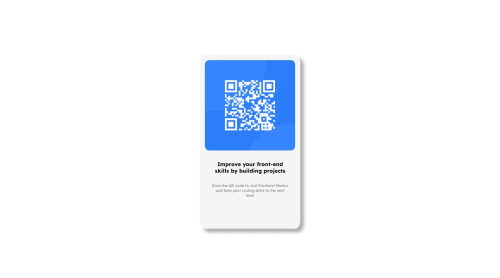Mobile First QR code component using flex box

Solution retrospective
This is a QR code element that is coded using vanilla CSS. I am happy that I could replicate the design from scratch and made a good looking design.
What challenges did you encounter, and how did you overcome them?I was confused what to use at first. I thought of using grids but later I used flex box. Dividing the components into sub sections helped me think and learn to how breakdown things into smaller task.
What specific areas of your project would you like help with?I would like help with other technologies that can be used to make the same thing. Currently I am using vanilla CSS but would love to use other technologies that might help me to build this quickly and efficiently.
Please log in to post a comment
Log in with GitHubCommunity feedback
- @1deadjoe
The layout adapts well to different screen sizes, thanks to the effective use flexbox layouts. The content flows naturally, and no significant issues were observed across various devices and screen resolutions. Regarding the design, your solution closely aligns with the provided design specifications. The visual elements, layout, and overall aesthetic are faithfully represented. Just to point out, the background color was different from the one specified.
Marked as helpful - @1deadjoe
The layout adapts well to different screen sizes, thanks to the effective use flexbox layouts. The content flows naturally, and no significant issues were observed across various devices and screen resolutions. Regarding the design, your solution closely aligns with the provided design specifications. The visual elements, layout, and overall aesthetic are faithfully represented. Just to point out, the background color was different from the one specified.
Join our Discord community
Join thousands of Frontend Mentor community members taking the challenges, sharing resources, helping each other, and chatting about all things front-end!
Join our Discord